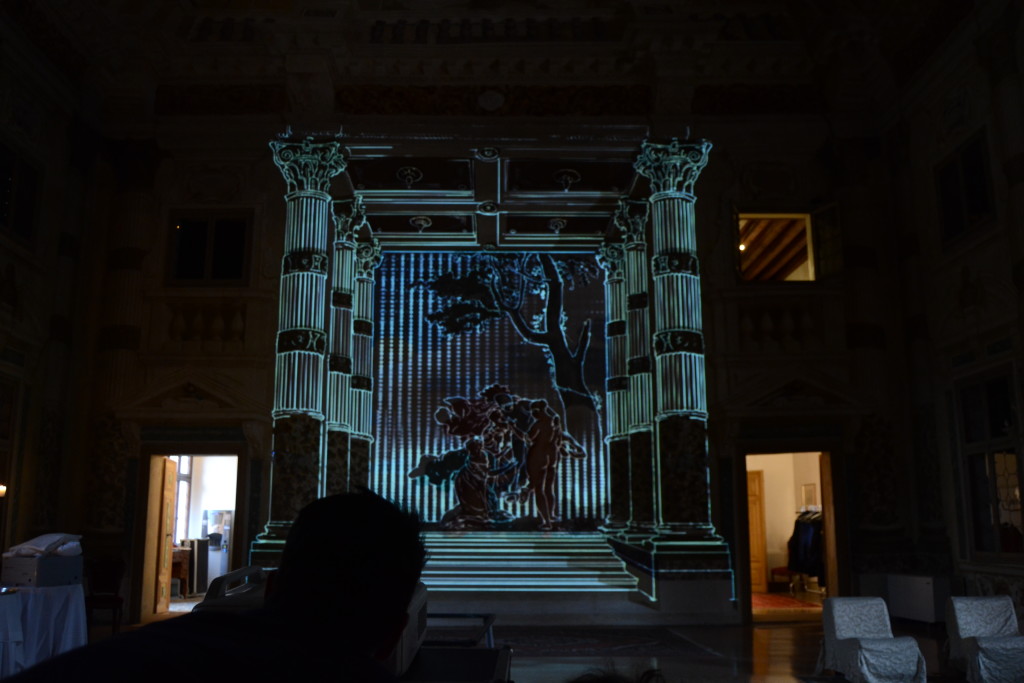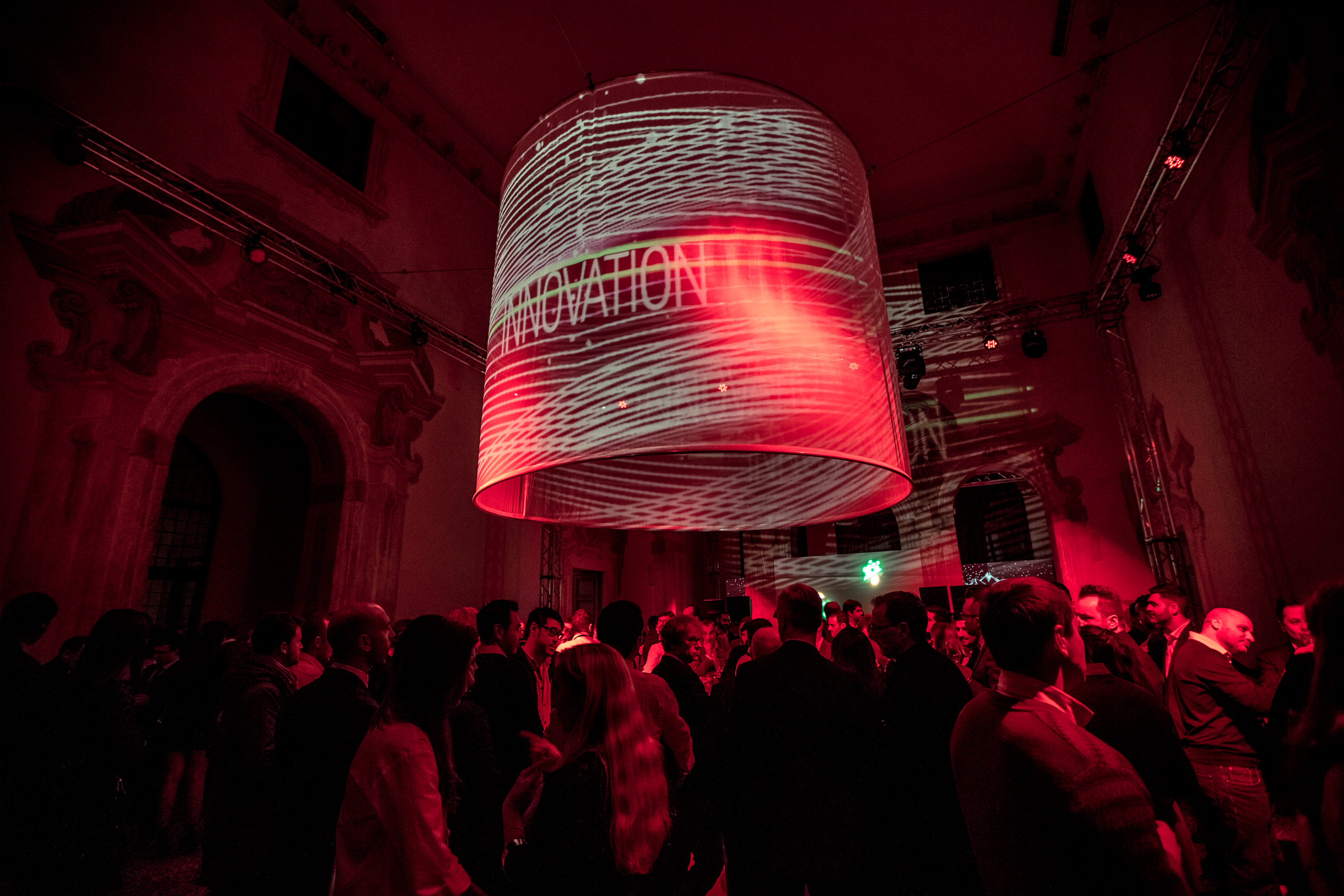di Arianna Forte
ZebraMapping is a group of creatives based in Vicenza and specialized in live videos, interactive installations and mainly in Video mapping.
They started to carry on their productions in the clubs field and now they both work for big companies, like Louis Vuitton, and creating their artistic projects. They are very young and talented. We met and interviewed Amerigo Piana aka Akufene, one of Zebra founders.
First of all, what’s ZebraMapping?
Formally we’re a joint venture. At the beginning it was two of us, Sebastiano Antonello and me, we are five now putting more skills together. We started doing vijng in discoes and slowly tried to bring video projections out of their usual rectangular support: we invented new structures for the video projections, then we moved on to urban architecture.
How is your team formed? How do you all share the work?
I deal with the direction of our events in real time, with music and sound design; Sebastiano Antonello deals with public relations, hardware and projections organization; Manuel Bedin is a designer and electrical
How long have you been working as a group?
Since October 2013.
At that time you must have been really young! How old were you?
I’m 23, Sebastiano is 24, Manuel 22, Andrea Maurelli 22 and Andrea Rao is 26.
Congratulations! Which are your areas of interest?
First of all there are the installations, created by us, on which we project and do vjset; they are structures with geometrical modules, hexagonal, triangular, etc. set like a scenic design.

Besides we develop installations for corporate or fair events. We’ve worked for companies’ annual and opening ceremony. We’ve just finished a project realized for Pitti Uomo at the Fortezza da Basso in Florence. For this occasion the structure was a Led Wall of 8×5 metres, on which we have projected videos; from this structure it was possible to get to the cupola inside the Fortezza. Here we’ve made a 360° Video Mapping that displayed on the cupola internal architectures. Part of our work is about Led Mapping and also this project is born in the clubs. At the moment we make two nights a month, one in Venice and one in Vicenza; they’re characterized by wooden structures where we apply led stripes controlled by computers. In Venice the dj is inside the structure, which has a cubical shape, making so an immersing situation. The stripes enlighten like daylight and have a strong stage effect, perfect for techno!
Well, Talking about your productions… The most impressive is the Projection Mapping for The Basilica Palladiana. What’s the concept of this projection? Here the visuals are introduced by a voice that seems refer to the myth of Plato’s cave…
Then one of Basilica Palladiana in Vicenza is the first important architectural we’ve realized and it was in occasion of Il Giro Della Rua 2015. We had enough freedom of choice about the artwork, but we had to keep a line for a really vast audience so we decided to insert a narrative expedient. The idea was to introduce the video projection from another point of view. Questioning about what is reality. Substantially Video Mapping is a projection on a real surface that tries to subvert the normal experience of urban space, through the creation of illusions and deforming the normal perception of reality.
So it was a sort of meta-video projection? A reflection on the projection mapping?
Yes it might be seen as a reflection on the artistic media we use. The myth of the cavern was an expedient to introduce the question: ” Where ends reality and where starts the fiction?”. Somebody could have said: “Do you think that’s air you’re breathing?”
What other architectural projection works have you done?
Projections for Villa Foscarini Rossi at Stra for Louis Vuitton and then a sort of contrary architectural in Villa La Favorita at Monticello di Fara where the projections were on the interior walls of the architectures. Recently we’ve worked to a projection mapping of a fresco. In the Villa at Stra we made experiments on almost the whole wall. Particular is the double cross between the fresco perspective and the projections perspective. Recreating an illusory space inside an illusory space… as it was the second level of Inception!
Really interesting! From your of view, the digital natives consider technology as natural element?
I think the topic about digital natives is complex, as the definition is not based on the knowledge of computers but on their usage. Digital natives are not used to relate to the machine since they’re born; they are used to interface with softwares and applications. I think the real use of computers starts when programming starts, it’s not about inner skills. When we use video or audio editing programs, for instance, we don’t relate to the machine but to the software and its graphic interface. When we learn to program we start to understand logic and find solutions to develop our own ideas. Which are the paths the brain has to follow to communicate with the computer and develop these ideas? Commercial software easy the approach to the machine through graphic interface (photoshop layers, the brushes, for instance), emulating in digital sphere behaviors we have in real world.
Are you working on other projects?
We’ve been thinking about a tour where we can make projections in non-conventional places like natural landscapes or abandoned urban structures. We’ll work on this new fields. In the meantime we’re working at interactive installations for the Computer Vision, using Leap Motion and algorithm (technology of movement capture through interaction between man and computer ndr). These sensors open the way to the augmented reality!
Why these technologies?
We’re trying new ways to communicate with the computer making it perceptive through these new sensors. The commonly used communication systems between man/computer go through input/out devices like a mouse or a keyboard. The Leap Motion technology geys closer to a level of natural interaction with computer: allows to relate to it through simple hands movements.
Have you already experienced these sensors?
Yes, I already used them for the sound spatialization for the concerts of Electronic Music course at the conservatory of Vicenza in 2014. Spatializing means to move a sound source in a three-dimensional space created by a multichannel system of speakers. At the moment I’m developing, for Leap Motion, a software where it’s possible to travel in a virtual world, it works like the Poly Fauna app launched by the Radiohead. It’s a program that organizes audio and video in real time offering many standards for generation. We aim always more to the generated video audio, which is not very diffused. My education and Andrea Rao’s is about sound field, we‘re both certificate at the conservatory of Vicenza for the electronic music course, we both have a long experience in directing self-generated video and audio in function to the standards given to the program.
Are you in a full projecting phase?
Yes, I’ve already started the prototype program and begun to solve the main problems… It’ll be ready shortly. Video and light are dominant in our work but now we’re increasing all the other aspects towards immersion and interactivity. We’re working for this… Even if we’re a little studio and we would need more resources to develop all the ideas and projects we have!
Cover: ZebraMapping, Sarego (VI) – Villa La Favorita, 23 Gennaio 2016, ProGold Private Party







